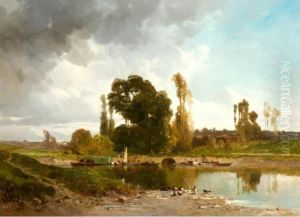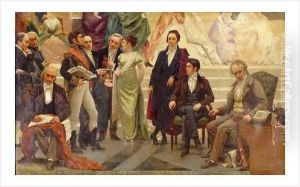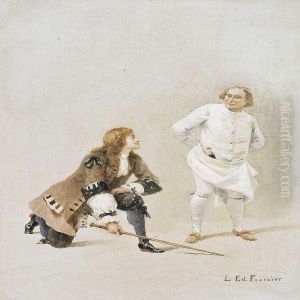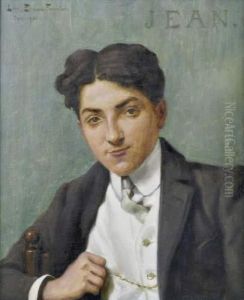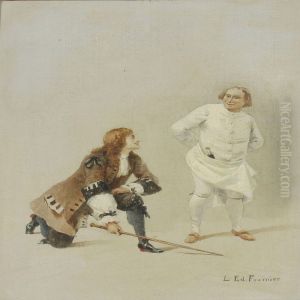Louis Edouard Fournier Paintings
Louis Édouard Fournier was a French painter and illustrator born on December 12, 1857, in Paris, France. He is best known for his historical and allegorical scenes, as well as his association with the Symbolist movement. Fournier studied art at the École nationale supérieure des Beaux-Arts in Paris under the tutelage of Alexandre Cabanel and also received guidance from William-Adolphe Bouguereau, both of whom were prominent academic artists of their time.
Fournier’s work is characterized by a meticulous attention to detail and a romantic sensibility, reflecting the influence of the academic tradition in which he was trained. However, his subject matter often delved into the realms of symbolism and mythology, setting him apart from the strict realism of his academic mentors. He gained particular acclaim for his painting 'The Funeral of Shelley' (1889), which depicts the cremation of the English poet Percy Bysshe Shelley on the Italian coast. The painting is celebrated for its poignant portrayal of the event and its atmospheric use of light.
Throughout his career, Fournier contributed to various public works and received commissions for large-scale murals, which included decorations for the Sorbonne and the Hôtel de Ville in Paris. In addition to painting, he worked as an illustrator, providing images for classic literary texts, such as an 1887 edition of 'Les Fleurs du mal' by Charles Baudelaire. His illustrative work is noted for its evocative line work and dramatic compositions.
Despite his accomplishments, Fournier's name is not as widely recognized as some of his contemporaries. He continued to exhibit his work at the Salon, the official art exhibition of the Académie des Beaux-Arts in Paris, and other venues throughout his career. Louis Édouard Fournier passed away on March 10, 1917, in Paris. His legacy lives on through his contributions to late 19th-century French painting and his influence on the Symbolist movement.
